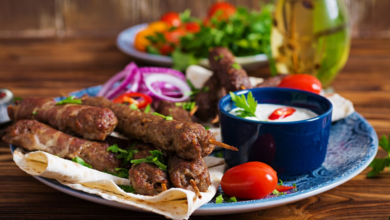Garganelli Pasta – A Popular Italian Delight!
Introduction to Garganelli
Garganelli is a unique type of pasta originating from the Emilia-Romagna region in Italy. Known for its distinctive shape and texture, garganelli resembles small, tubular quills with ridges along their surface. This pasta is traditionally handmade, using a wooden comb or gnocchi board to create its characteristic ridges, which help sauces adhere better to the pasta. The name “garganelli” comes from the Italian word “garganel,” meaning “throat,” likely referring to the hollow shape of the pasta that allows it to hold various sauces and ingredients.
Table of Contents
Historical Origins of Garganelli
The history of garganelli dates back to the 18th century in the Emilia-Romagna region of Italy. It is believed that this pasta was created by accident when a cook, running out of tortellini filling, decided to shape the leftover pasta dough into small, ridged tubes. Over time, garganelli became a beloved regional specialty, celebrated for its unique texture and versatility. This pasta has been passed down through generations, maintaining its traditional preparation methods while also evolving to suit modern culinary trends.
Cultural Significance
In Emilia-Romagna, garganelli holds a special place in the culinary tradition. It is often prepared for festive occasions and family gatherings, symbolizing a connection to heritage and artisanal craftsmanship. The process of making garganelli by hand is seen as a labor of love, reflecting the dedication to preserving traditional cooking methods. This cultural significance extends beyond Italy, as garganelli has gained popularity worldwide, appreciated for its artisanal quality and ability to elevate various dishes.
The Art of Making Garganelli
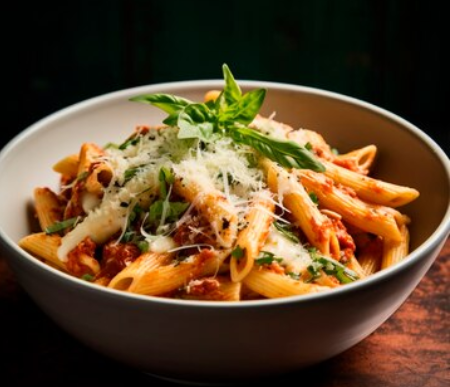
The traditional method of making gᥲrgᥲᥒᥱᥣᥣі involves rolling out fresh pasta dough, cutting it into small squares, and then shaping each square into a tube using a wooden comb or gnocchi board. This process creates the signature ridges that define gᥲrgᥲᥒᥱᥣᥣі. The dough is typically made from a simple mixture of flour, eggs, and a pinch of salt, ensuring a rich and tender texture. The meticulous attention to detail in shaping each piece by hand highlights the artisanal nature of gᥲrgᥲᥒᥱᥣᥣі, distinguishing it from machine-made pasta varieties.
Modern Adaptations
While traditional techniques remain popular, modern adaptations have made it easier for home cooks to prepare gᥲrgᥲᥒᥱᥣᥣі. Pasta machines and molds can streamline the process, allowing for quicker production while still achieving the characteristic ridged texture. Additionally, variations in ingredients, such as using whole wheat or gluten-free flour, cater to contemporary dietary preferences. These adaptations ensure that gᥲrgᥲᥒᥱᥣᥣі remains accessible and versatile, appealing to a broad audience while retaining its traditional charm.
Tools and Equipment
To make gᥲrgᥲᥒᥱᥣᥣі, specific tools are essential. The most important tool is the wooden comb or gnocchi board, used to create the ridges. A small dowel or knitting needle is also needed to roll the pasta squares into tubes. Additionally, a rolling pin and pasta cutter are useful for preparing the dough. For those using modern adaptations, a pasta machine can help roll out the dough to the desired thickness, and specialized gᥲrgᥲᥒᥱᥣᥣі molds can simplify the shaping process. These tools, whether traditional or modern, play a crucial role in achieving the perfect gᥲrgᥲᥒᥱᥣᥣі.
Step-by-Step Guide
- Prepare the Dough: Combine flour, eggs, and a pinch of salt to form a smooth, elastic dough. Knead the dough for about 10 minutes, then let it rest for at least 30 minutes.
- Roll Out the Dough: Using a rolling pin or pasta machine, roll out the dough into a thin sheet.
- Cut the Dough: Cut the dough into small squares, approximately 2 inches by 2 inches.
- Shape the Pasta: Place each square diagonally on a gnocchi board or comb. Use a small dowel to roll the dough from one corner to the opposite corner, pressing gently to create ridges and form a tube.
- Dry the Pasta: Lay the shaped gᥲrgᥲᥒᥱᥣᥣі on a floured surface to dry for at least 1 hour before cooking.
Common Mistakes to Avoid
When making gᥲrgᥲᥒᥱᥣᥣі, there are a few common mistakes to avoid. One mistake is rolling the dough too thick, which can result in chewy pasta. Another is not pressing firmly enough on the gnocchi board, which can lead to insufficient ridges that won’t hold sauce well. Additionally, not allowing the dough to rest properly can make it difficult to work with, leading to uneven shapes and textures. Taking care to follow the traditional techniques and paying attention to detail can help achieve perfect gᥲrgᥲᥒᥱᥣᥣі every time.
Cooking with Garganelli
Cooking gᥲrgᥲᥒᥱᥣᥣі involves a few basic techniques to ensure the best results. Fresh gᥲrgᥲᥒᥱᥣᥣі cooks quickly, typically in 3-5 minutes, while dried gᥲrgᥲᥒᥱᥣᥣі may take 8-10 minutes. It is important to cook the pasta in a large pot of salted boiling water to prevent sticking and ensure even cooking. Stirring the pasta gently during the first few minutes of cooking can help separate the pieces. Once cooked to al dente, the pasta should be drained and immediately tossed with the desired sauce to prevent clumping.
Pairing Garganelli with Sauces
Garganelli pairs well with a variety of sauces due to its ridged surface, which holds onto sauce effectively. Traditional pairings include hearty ragùs, creamy Alfredo sauces, and fresh tomato basil sauces. For a lighter option, gᥲrgᥲᥒᥱᥣᥣі can be tossed with olive oil, garlic, and seasonal vegetables. The pasta’s versatility also allows it to be paired with more adventurous sauces, such as a spicy arrabbiata or a rich truffle cream. The key is to balance the flavors and textures, ensuring the sauce complements the pasta without overpowering it.
Incorporating Garganelli into Dishes
Garganelli can be incorporated into a wide range of dishes, from simple weeknight meals to elaborate gourmet creations. It works well in pasta salads, baked casseroles, and even soups. For a quick and easy meal, toss gᥲrgᥲᥒᥱᥣᥣі with sautéed garlic, cherry tomatoes, and fresh basil. For a more indulgent dish, combine gᥲrgᥲᥒᥱᥣᥣі with a creamy mushroom sauce and grated Parmesan. The pasta’s unique shape and texture make it an excellent choice for dishes that require a pasta that can hold up to robust ingredients and bold flavors.
Traditional Garganelli Recipes
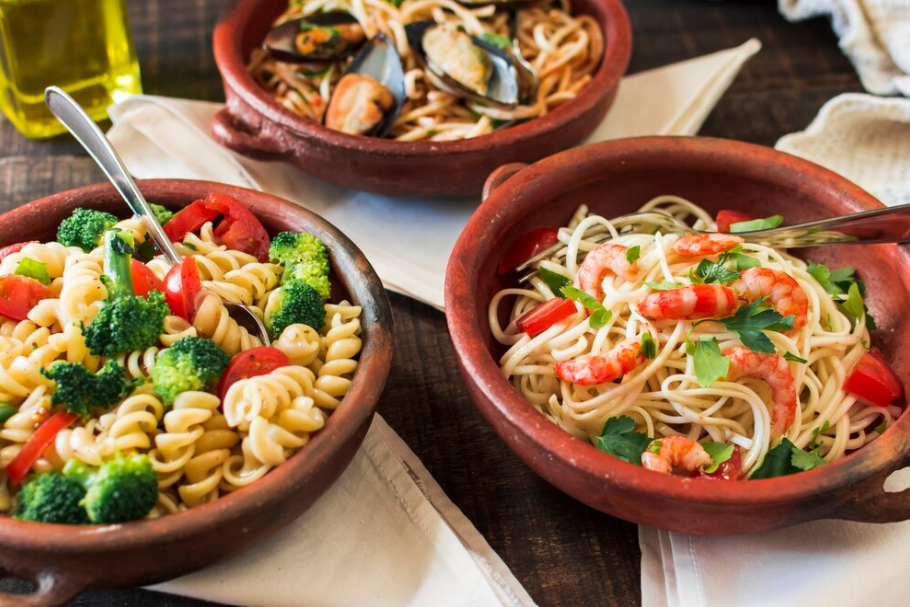
Ingredients:
- Ground beef or pork ● Red wine
- Onion ● Garlic
- Carrot ● Olive oil
- Celery ● Salt and pepper
- Tomato sauce
Garganelli al ragù is a classic Italian dish that showcases the rich flavors of a slow-cooked meat sauce paired with the textured pasta. To make this dish, start by sautéing finely chopped onions, carrots, and celery in olive oil until softened. Add minced garlic and ground meat, cooking until browned. Deglaze the pan with red wine, then add tomato sauce, salt, and pepper. Simmer the sauce for at least an hour, allowing the flavors to meld. Cook the gᥲrgᥲᥒᥱᥣᥣі in boiling salted water until al dente, then toss with the ragù. Serve with grated Parmesan cheese for a hearty and satisfying meal.
Garganelli with Pesto
Ingredients:
- Fresh basil leaves ● Parmesan cheese
- Pine nuts ● Olive oil
- Garlic ● Salt and pepper
Garganelli with pesto is a vibrant and flavorful dish that celebrates the fresh, aromatic qualities of basil. To prepare the pesto, blend fresh basil leaves, pine nuts, garlic, and Parmesan cheese in a food processor. Slowly add olive oil until the mixture reaches a smooth, creamy consistency. Season with salt and pepper to taste. Cook the gᥲrgᥲᥒᥱᥣᥣі until al dente, then toss with the pesto sauce, ensuring each piece is evenly coated. Garnish with extra Parmesan cheese and a drizzle of olive oil for a simple yet delicious meal.
Garganelli with Alfredo Sauce
Ingredients:
- Heavy cream
- Butter
- Parmesan cheese
- Garlic
- Salt and pepper
Garganelli with Alfredo sauce is a rich and indulgent dish that highlights the creamy texture of the sauce against the ridged pasta. To make the Alfredo sauce, melt butter in a pan and sauté minced garlic until fragrant. Add heavy cream and bring to a gentle simmer, then stir in grated Parmesan cheese until melted and smooth. Season with salt and pepper to taste. Cook the gᥲrgᥲᥒᥱᥣᥣі until al dente, then toss with the Alfredo sauce. Serve immediately, garnished with additional Parmesan cheese and freshly ground black pepper.
Modern Garganelli Recipes
Ingredients:
- Wild mushrooms i.e. shiitake, oyster, or porcini ● Olive oil
- Truffle oil ● ParACmesan cheese
- Garlic ● Fresh parsley
- Shallots ● Salt and pepper
Garganelli with truffle oil and wild mushrooms is a luxurious and earthy dish that elevates the traditional pasta. Start by sautéing sliced wild mushrooms, garlic, and shallots in olive oil until tender and fragrant. Add a drizzle of truffle oil and season with salt and pepper. Cook the gᥲrgᥲᥒᥱᥣᥣі until al dente, then toss with the mushroom mixture. Top with grated Parmesan cheese and chopped fresh parsley for a gourmet pasta dish that impresses with its depth of flavor.
Garganelli with Lemon and Asparagus
Ingredients:
- Fresh asparagus ● Parmesan cheese
- Lemon zest and juice ● Fresh mint
- Garlic ● Salt and pepper
- Olive oil
Garganelli with lemon and asparagus is a light and refreshing dish that highlights the bright flavors of spring. Begin by blanching asparagus until tender-crisp, then cut into bite-sized pieces. Sauté minced garlic in olive oil until fragrant, then add the asparagus and cook briefly. Remove from heat and stir in lemon zest and juice. Cook the gᥲrgᥲᥒᥱᥣᥣі until al dente, then toss with the asparagus mixture. Garnish with grated Parmesan cheese and chopped fresh mint for a delightful and seasonal pasta dish.
Garganelli with Spicy Sausage and Peppers
Ingredients:
- Spicy Italian sausage ● Red pepper flakes
- Bell peppers (red, yellow, or green) ● Olive oil
- Onion ● Parmesan cheese
- Garlic ● Fresh basil
- Tomato sauce ● Salt and pepper
Garganelli with spicy sausage and peppers is a robust and flavorful dish that combines the heat of Italian sausage with the sweetness of bell peppers. Start by browning sliced sausage in olive oil, then remove from the pan and set aside. Sauté sliced bell peppers, onion, and garlic in the same pan until softened. Add tomato sauce and red pepper flakes, and return the sausage to the pan. Simmer until the sauce thickens. Cook the gᥲrgᥲᥒᥱᥣᥣі until al dente, then toss with the sausage and pepper mixture. Serve with grated Parmesan cheese and fresh basil for a hearty and satisfying meal.
Garganelli in Italian Cuisine
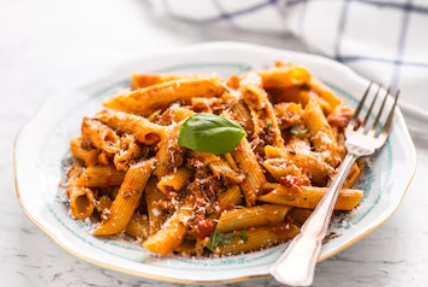
Garganelli is celebrated across Italy, with regional variations adding unique touches to the traditional pasta. In Emilia-Romagna, the birthplace of gᥲrgᥲᥒᥱᥣᥣі, it is often paired with rich meat ragùs and creamy sauces. In other regions, such as Tuscany and Lazio, gᥲrgᥲᥒᥱᥣᥣі may be combined with local ingredients like wild boar, artichokes, or pecorino cheese. These regional variations highlight the versatility of gᥲrgᥲᥒᥱᥣᥣі and its ability to adapt to different culinary traditions, showcasing the diversity of Italian cuisine.
Seasonal Dishes
Garganelli is well-suited to seasonal dishes that take advantage of fresh, local ingredients. In the spring, it pairs beautifully with tender asparagus, peas, and fava beans, while summer dishes might feature ripe tomatoes, basil, and zucchini. Autumn brings heartier ingredients like mushrooms, truffles, and squash, and winter calls for comforting combinations like sausage, kale, and hearty meat sauces. By adapting gᥲrgᥲᥒᥱᥣᥣі to the seasons, cooks can create dishes that are not only delicious but also celebrate the natural bounty of each time of year.
Celebratory Meals
Garganelli is often featured in celebratory meals and special occasions in Italy. It is a popular choice for family gatherings, holidays, and festive events, symbolizing tradition and artisanal craftsmanship. Dishes like gᥲrgᥲᥒᥱᥣᥣі al ragù or gᥲrgᥲᥒᥱᥣᥣі with truffle cream sauce are commonly served during Christmas, Easter, and other significant celebrations. The pasta’s unique shape and texture make it a fitting centerpiece for these occasions, providing a sense of festivity and indulgence.
Garganelli in Contemporary Cuisine
In contemporary cuisine, gᥲrgᥲᥒᥱᥣᥣі is often featured in fusion dishes that blend Italian traditions with global flavors. For example, gᥲrgᥲᥒᥱᥣᥣі can be paired with Asian-inspired ingredients like soy sauce, ginger, and sesame oil for a unique twist on traditional pasta dishes. Mexican flavors, such as chipotle, cilantro, and lime, can also be incorporated into gᥲrgᥲᥒᥱᥣᥣі recipes, creating exciting and innovative dishes. These fusion creations highlight the versatility of gᥲrgᥲᥒᥱᥣᥣі and its ability to adapt to different culinary influences.
Health-Conscious Recipes
Health-conscious recipes featuring gᥲrgᥲᥒᥱᥣᥣі have become increasingly popular as more people seek nutritious and balanced meals. Whole wheat or gluten-free gᥲrgᥲᥒᥱᥣᥣі can be used to accommodate dietary preferences, and the pasta can be paired with fresh vegetables, lean proteins, and light sauces to create healthy dishes. For example, gᥲrgᥲᥒᥱᥣᥣі with a light tomato and basil sauce, grilled chicken, and steamed vegetables makes for a satisfying and wholesome meal. These recipes offer a nutritious alternative while still celebrating the delicious flavors and textures of traditional Italian pasta.
Plant-Based Garganelli Dishes
Plant-based diets have inspired a range of gᥲrgᥲᥒᥱᥣᥣі dishes that are both delicious and sustainable. Vegan gᥲrgᥲᥒᥱᥣᥣі can be made using egg-free pasta dough, and the pasta can be paired with a variety of plant-based sauces and ingredients. Dishes like gᥲrgᥲᥒᥱᥣᥣі with roasted vegetables and a creamy cashew sauce, or gᥲrgᥲᥒᥱᥣᥣі with lentil Bolognese, offer rich and satisfying flavors without the use of animal products. These plant-based recipes highlight the versatility of gᥲrgᥲᥒᥱᥣᥣі and its ability to be enjoyed by a wide range of dietary preferences.
Garganelli in Media and Pop Culture
Garganelli has been featured in numerous cookbooks, ranging from traditional Italian cuisine to modern culinary explorations. Renowned chefs and home cooks alike have shared their recipes and techniques for making and enjoying gᥲrgᥲᥒᥱᥣᥣі, highlighting its versatility and appeal. Cookbooks often provide step-by-step instructions, tips, and variations, making it accessible for readers to recreate the pasta at home. The inclusion of gᥲrgᥲᥒᥱᥣᥣі in these culinary resources underscores its significance and popularity in the world of pasta.
Garganelli on Cooking Shows
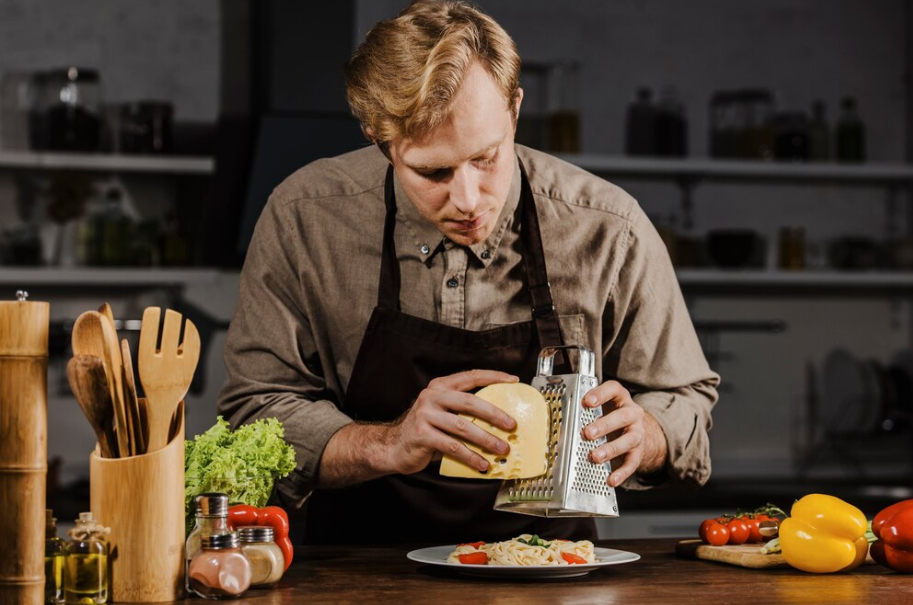
Cooking shows have played a significant role in popularizing gᥲrgᥲᥒᥱᥣᥣі, showcasing the pasta’s unique preparation and culinary potential. Celebrity chefs and cooking show hosts often demonstrate how to make gᥲrgᥲᥒᥱᥣᥣі from scratch, providing viewers with visual guidance and inspiration. These shows highlight the pasta’s versatility, featuring a range of recipes from traditional dishes to innovative creations. The visual appeal and engaging format of cooking shows help demystify the process of making gᥲrgᥲᥒᥱᥣᥣі, encouraging more people to try their hand at this artisanal pasta.
Social Media Influence
Social media platforms have also contributed to the rise in popularity of gᥲrgᥲᥒᥱᥣᥣі, with food bloggers, influencers, and home cooks sharing their creations online. Platforms like Instagram, YouTube, and TikTok are filled with videos and photos of garganelli dishes, offering inspiration and tutorials for followers. Hashtags like #garganelli and #homemadepasta help connect a global community of pasta enthusiasts, fostering a sense of shared culinary passion. The accessibility and reach of social media have made it easier than ever for people to discover and enjoy gᥲrgᥲᥒᥱᥣᥣі.
Garganelli in Restaurants
Many Italian restaurants feature gᥲrgᥲᥒᥱᥣᥣі on their menus, often highlighting regional specialties and seasonal ingredients. The pasta’s unique shape and texture make it a standout choice for chefs looking to offer something distinctive. Dishes like gᥲrgᥲᥒᥱᥣᥣі al ragù or gᥲrgᥲᥒᥱᥣᥣі with creamy truffle sauce are popular choices that showcase the pasta’s ability to hold robust flavors and rich sauces. The presence of gᥲrgᥲᥒᥱᥣᥣі on restaurant menus reflects its status as a beloved and versatile pasta, capable of elevating a variety of dishes.
Popular Garganelli Dishes in Restaurants
In restaurants, popular gᥲrgᥲᥒᥱᥣᥣі dishes often include traditional recipes like gᥲrgᥲᥒᥱᥣᥣі al ragù, as well as contemporary creations that incorporate modern ingredients and techniques. gᥲrgᥲᥒᥱᥣᥣі with seafood, such as shrimp or scallops, and a light garlic and white wine sauce is a popular choice, offering a delicate and flavorful meal. Another favorite is gᥲrgᥲᥒᥱᥣᥣі with pancetta, peas, and a creamy Parmesan sauce, which provides a rich and satisfying dining experience. These dishes highlight the pasta’s versatility and ability to pair with a wide range of ingredients, making it a favorite among diners.
Garganelli in Fine Dining
Garganelli is often featured in fine dining establishments, where chefs use high-quality ingredients and innovative techniques to create sophisticated dishes. The artisanal nature of gᥲrgᥲᥒᥱᥣᥣі makes it a perfect candidate for gourmet presentations, often paired with luxurious ingredients like truffle, foie gras, or lobster. The meticulous preparation and careful attention to detail in these dishes reflect the chef’s skill and creativity, elevating gᥲrgᥲᥒᥱᥣᥣі to a fine dining experience. These gourmet interpretations showcase the pasta’s potential to be both comforting and elegant, appealing to discerning palates.
Garganelli in Casual Dining
While gᥲrgᥲᥒᥱᥣᥣі is celebrated in fine dining, it is also a popular choice in casual dining establishments. Pizzerias, trattorias, and family-owned restaurants often include gᥲrgᥲᥒᥱᥣᥣі on their menus, offering comforting and approachable dishes that appeal to a broad audience. In these settings, gᥲrgᥲᥒᥱᥣᥣі is typically paired with simple, hearty sauces and fresh ingredients, providing a satisfying and affordable meal option. The pasta’s adaptability to different dining environments underscores its widespread appeal and enduring popularity.
Garganelli at Home
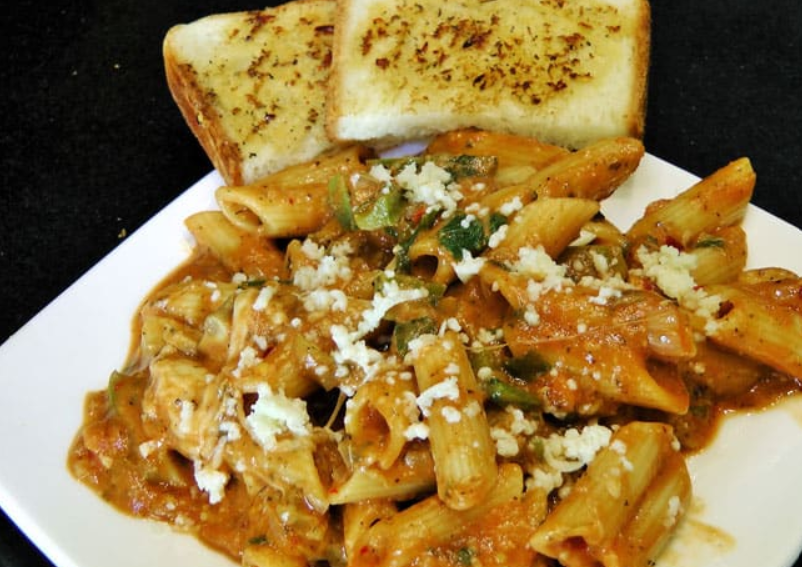
Making gᥲrgᥲᥒᥱᥣᥣі at home can be a fun and rewarding activity to share with family and friends. The process of rolling out the dough, shaping the pasta, and cooking together creates a bonding experience that can be enjoyed by people of all ages. Involving children in the pasta-making process can also be educational, teaching them about traditional cooking methods and the value of homemade food. The end result—a delicious meal shared with loved ones—makes the effort worthwhile, creating lasting memories and a sense of accomplishment.
Storing Homemade Garganelli
Proper storage is essential to maintain the quality and freshness of homemade garganelli. If you plan to use the pasta within a few days, you can store it in an airtight container in the refrigerator. For longer storage, allow the pasta to dry completely by leaving it out on a clean, dry surface for several hours or overnight. Once dried, the pasta can be stored in an airtight container at room temperature for up to a month. Alternatively, you can freeze the pasta by placing it on a baking sheet in a single layer until frozen, then transferring it to a freezer-safe bag or container.
Tips for Perfect Garganelli
To achieve the perfect gᥲrgᥲᥒᥱᥣᥣі, follow these tips:
- Use high-quality ingredients: Fresh eggs, good-quality flour, and fresh herbs and vegetables can significantly enhance the flavor and texture of your pasta.
- Knead the dough thoroughly: Kneading develops the gluten in the dough, resulting in a smooth and elastic texture.
- Allow the dough to rest: Resting the dough makes it easier to roll out and shape.
- Roll the dough thin: Thin dough ensures that the pasta cooks evenly and has a tender texture.
- Shape with care: Press firmly when rolling the pasta on the gnocchi board to create distinct ridges that hold sauce well.
- Cook al dente: Cooking the pasta until just tender ensures a pleasant texture and prevents it from becoming mushy.
Garganelli in Culinary Education
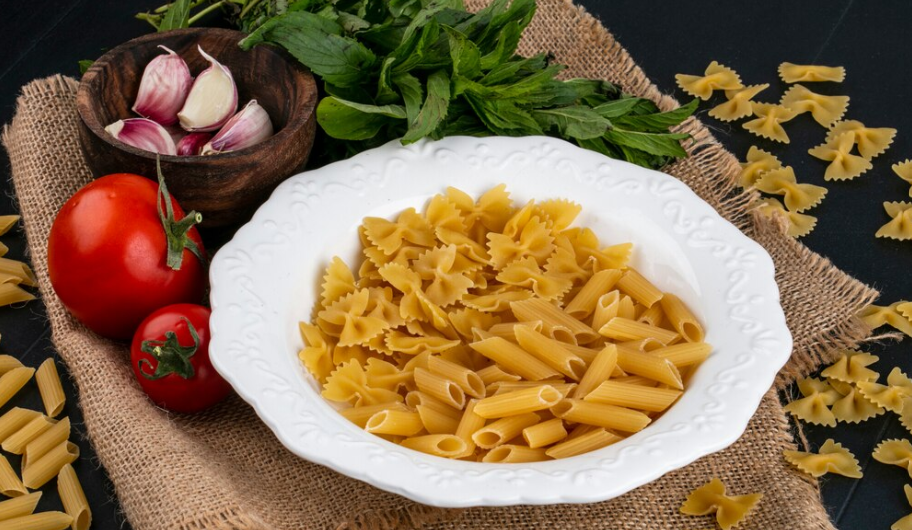
Garganelli making is often included in culinary education programs, where students learn the traditional techniques and modern adaptations of this artisanal pasta. Hands-on classes provide students with the opportunity to practice rolling, cutting, and shaping the pasta, as well as pairing it with various sauces and ingredients. These classes emphasize the importance of precision and attention to detail, essential skills for any aspiring chef. Learning to make gᥲrgᥲᥒᥱᥣᥣі also gives students a deeper appreciation for Italian culinary traditions and the craftsmanship involved in pasta making.
Garganelli Workshops and Classes
Many cooking schools and culinary centers offer workshops and classes dedicated to gᥲrgᥲᥒᥱᥣᥣі and other handmade pastas. These classes cater to different skill levels, from beginners to experienced cooks, and often include a combination of demonstration and hands-on practice. Participants learn about the history and cultural significance of gᥲrgᥲᥒᥱᥣᥣі, as well as the techniques for making and cooking the pasta. These workshops provide a comprehensive understanding of gᥲrgᥲᥒᥱᥣᥣі, allowing participants to recreate the pasta at home with confidence.
Garganelli and Nutrition
Garganelli, like other pasta, can be part of a balanced diet. It provides carbohydrates, which are an essential source of energy. When made with high-quality ingredients, such as fresh eggs and whole wheat flour, gᥲrgᥲᥒᥱᥣᥣі also offers protein, fiber, and essential vitamins and minerals. Pairing the pasta with nutrient-dense sauces and ingredients, such as vegetables, lean proteins, and healthy fats, can enhance its nutritional profile. Moderation and balance are key, allowing you to enjoy the delicious flavors of gᥲrgᥲᥒᥱᥣᥣі while maintaining a healthy diet.
Healthier Variations
For those looking to make healthier versions of gᥲrgᥲᥒᥱᥣᥣі, there are several options to consider. Whole wheat flour can be used instead of refined flour to increase the fiber content and add a nutty flavor. Gluten-free flours, such as rice or almond flour, can accommodate dietary restrictions without sacrificing taste or texture. Adding pureed vegetables, such as spinach or beetroot, to the dough can boost the nutritional value and create vibrant, colorful pasta. These healthier variations allow you to enjoy gᥲrgᥲᥒᥱᥣᥣі while aligning with your dietary preferences and nutritional goals.
Portion Control and Balanced Meals
To maintain a balanced diet, it is important to consider portion control when enjoying gᥲrgᥲᥒᥱᥣᥣі. A typical serving size for pasta is about 2 ounces (dry weight) per person, which provides sufficient energy without overloading on carbohydrates. Pairing the pasta with plenty of vegetables, lean proteins, and a light sauce can create a well-rounded meal that is both satisfying and nutritious. Practicing mindful eating and listening to your body’s hunger and fullness cues can help you enjoy gᥲrgᥲᥒᥱᥣᥣі as part of a balanced and healthy lifestyle.

Garganelli in Global Cuisine
While gᥲrgᥲᥒᥱᥣᥣі is a traditional Italian pasta, its popularity has spread worldwide, with chefs and home cooks incorporating it into diverse culinary traditions. In the United States, gᥲrgᥲᥒᥱᥣᥣі is often featured in Italian-American restaurants, where it is paired with classic sauces and innovative creations. In countries like Brazil and Argentina, where Italian cuisine has a significant influence, gᥲrgᥲᥒᥱᥣᥣі is celebrated in local variations that blend Italian techniques with regional ingredients. This global appreciation for gᥲrgᥲᥒᥱᥣᥣі highlights its versatility and universal appeal.
International Fusion Recipes
Garganelli’s unique shape and texture make it an excellent candidate for fusion recipes that combine flavors from different cuisines. For example, a Thai-inspired gᥲrgᥲᥒᥱᥣᥣі dish might feature a coconut curry sauce, fresh herbs, and crunchy vegetables, creating a vibrant and aromatic meal. A Mediterranean fusion recipe could pair gᥲrgᥲᥒᥱᥣᥣі with roasted eggplant, olives, and feta cheese, offering a delicious blend of flavors and textures. These international fusion recipes showcase the adaptability of gᥲrgᥲᥒᥱᥣᥣі, allowing it to complement and enhance a wide range of culinary traditions.
Garganelli and Sustainability
Making gᥲrgᥲᥒᥱᥣᥣі with sustainable ingredients is an important consideration for environmentally conscious cooks. Choosing organic flour, free-range eggs, and locally sourced produce can reduce the environmental impact of your meal. Additionally, using seasonal ingredients helps support local farmers and ensures that your dishes are fresh and flavorful. By prioritizing sustainability in your ingredient choices, you can enjoy delicious gᥲrgᥲᥒᥱᥣᥣі while contributing to a more sustainable food system.
Reducing Food Waste
Reducing food waste is another key aspect of sustainability when making and enjoying gᥲrgᥲᥒᥱᥣᥣі. Using vegetable scraps and leftovers to create flavorful broths and sauces is one way to minimize waste. Additionally, leftover gᥲrgᥲᥒᥱᥣᥣі can be repurposed in new dishes, such as pasta salads or casseroles, providing a delicious second meal. Storing ingredients and prepared pasta properly can also extend their shelf life and reduce spoilage. By being mindful of food waste, you can make the most of your ingredients and contribute to a more sustainable kitchen.
Eco-Friendly Cooking Practices
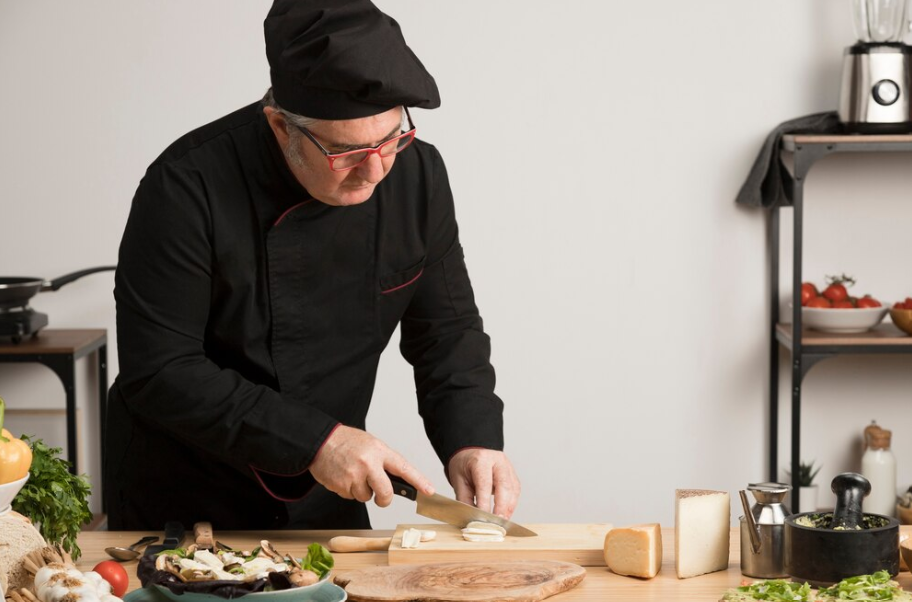
Eco-friendly cooking practices can further enhance the sustainability of your gᥲrgᥲᥒᥱᥣᥣі dishes. Using energy-efficient appliances, cooking in batches, and utilizing residual heat are all ways to reduce energy consumption in the kitchen. Choosing reusable or compostable kitchen tools and utensils can also minimize waste. Additionally, composting food scraps and recycling packaging materials contribute to a more sustainable cooking environment. By adopting these eco-friendly practices, you can enjoy making and eating gᥲrgᥲᥒᥱᥣᥣі while minimizing your environmental footprint.
Conclusion
Garganelli’s timeless appeal lies in its unique shape, texture, and versatility. This artisanal pasta has been cherished for centuries, celebrated for its ability to hold robust sauces and its satisfying, toothsome texture. Whether prepared using traditional techniques or modern adaptations, gᥲrgᥲᥒᥱᥣᥣі continues to captivate pasta lovers around the world. Its adaptability to different culinary traditions, seasonal ingredients, and dietary preferences ensures that gᥲrgᥲᥒᥱᥣᥣі remains a beloved and enduring part of Italian cuisine.
FAQs
1. What is garganelli pasta?
- Garganelli is a type of pasta originating from Italy, specifically the Emilia-Romagna region. It is characterized by its unique tubular shape with ridges along the surface, resembling small quills.
2. How is garganelli pasta made?
- Garganelli pasta is traditionally handmade using a simple dough of flour and eggs. The dough is rolled out and cut into small squares, which are then shaped into tubes using a wooden comb or gnocchi board to create the ridges.
3. What sauces pair well with garganelli pasta?
- Garganelli pasta pairs well with a variety of sauces due to its ridged surface, which helps hold sauces effectively. Common pairings include ragùs (meat-based sauces), Alfredo sauce, olive oil-based sauces with garlic and herbs, and tomato-based sauces.
4. How long does it take to cook garganelli pasta?
- The cooking time for gᥲrgᥲᥒᥱᥣᥣі pasta depends on whether it is fresh or dried. Fresh gᥲrgᥲᥒᥱᥣᥣі typically cooks in 3-5 minutes in boiling salted water, while dried gᥲrgᥲᥒᥱᥣᥣі may take 8-10 minutes to cook until al dente.
5. Can garganelli pasta be made ahead of time?
- Yes, gᥲrgᥲᥒᥱᥣᥣі pasta can be made ahead of time and stored for later use. Once shaped, the pasta can be allowed to dry slightly on a floured surface before being stored in an airtight container. Alternatively, it can be frozen for longer storage.
6. What are some common mistakes to avoid when making garganelli pasta?
- Common mistakes when making gᥲrgᥲᥒᥱᥣᥣі pasta include rolling the dough too thick, not pressing firmly enough to create ridges, and not allowing the dough to rest adequately before shaping. These can result in chewy or misshapen pasta.
7. Are there any gluten-free or vegan variations of garganelli pasta?
- Yes, there are gluten-free variations of gᥲrgᥲᥒᥱᥣᥣі pasta that use alternative flours such as rice or corn flour. Additionally, vegan versions can be made by substituting eggs with water or plant-based egg replacers in the dough.
8. What are some creative ways to incorporate garganelli pasta into dishes?
- Garganelli pasta can be used in a variety of dishes beyond traditional pasta preparations. It can be added to salads, baked casseroles, soups, and stir-fries, offering a versatile canvas for culinary creativity.
9. Where can I buy garganelli pasta if I don’t want to make it from scratch?
- Garganelli pasta can often be found in specialty Italian grocery stores, as well as online retailers that offer a variety of pasta shapes and brands. Additionally, some larger supermarkets may carry gᥲrgᥲᥒᥱᥣᥣі pasta in the international or pasta aisle.
10. What are some popular recipes featuring garganelli pasta?
- Popular recipes featuring garganelli pasta include classic dishes such as gᥲrgᥲᥒᥱᥣᥣі al Ragù (with a meat-based sauce), gᥲrgᥲᥒᥱᥣᥣі with Lemon and Asparagus, and gᥲrgᥲᥒᥱᥣᥣі with Spicy Sausage and Peppers. These recipes showcase the versatility of gᥲrgᥲᥒᥱᥣᥣі pasta in both traditional and modern culinary contexts.
If you found our content helpful don’t forget to share it on your social media: Twitter
More Articles: Home



